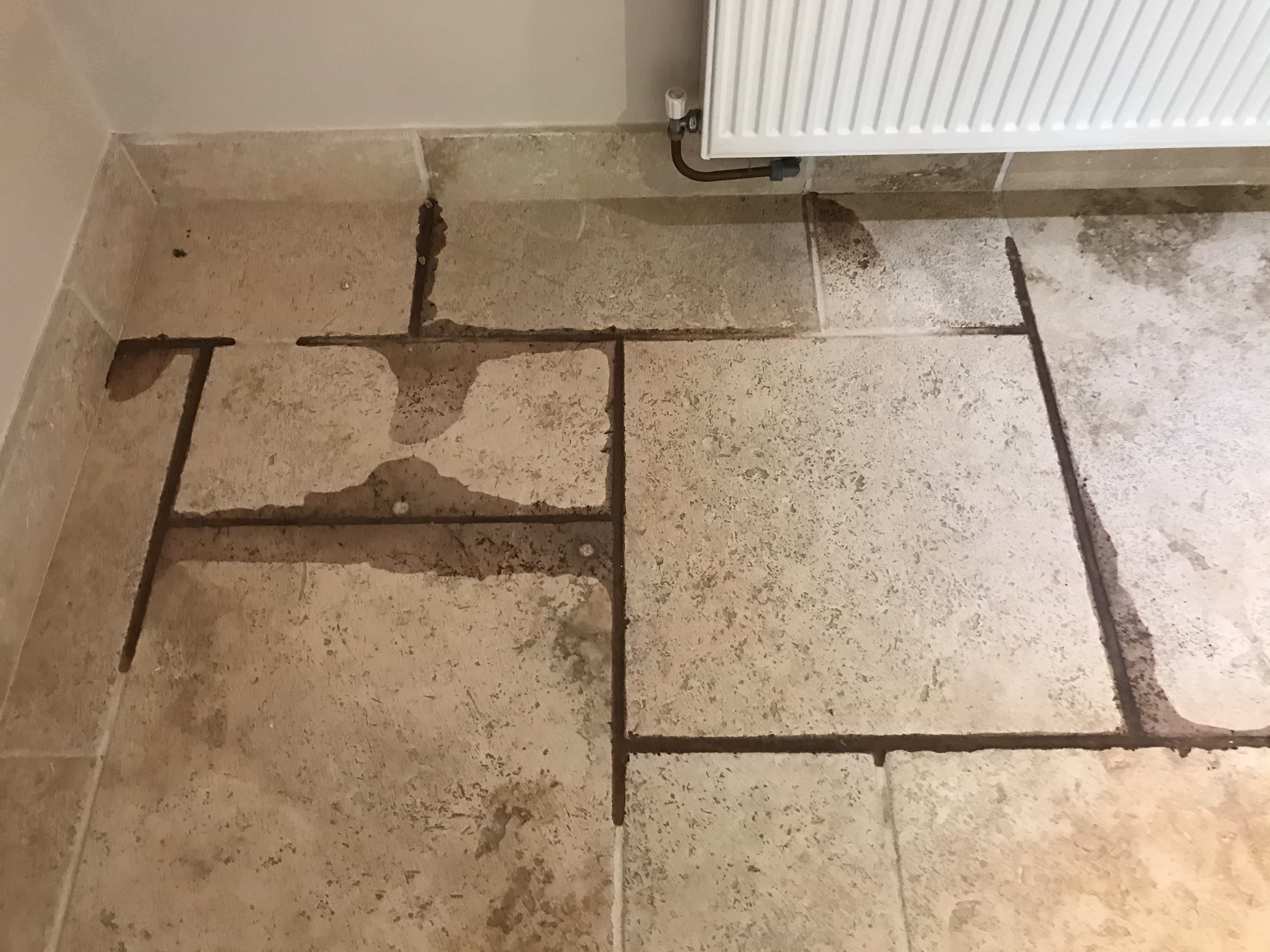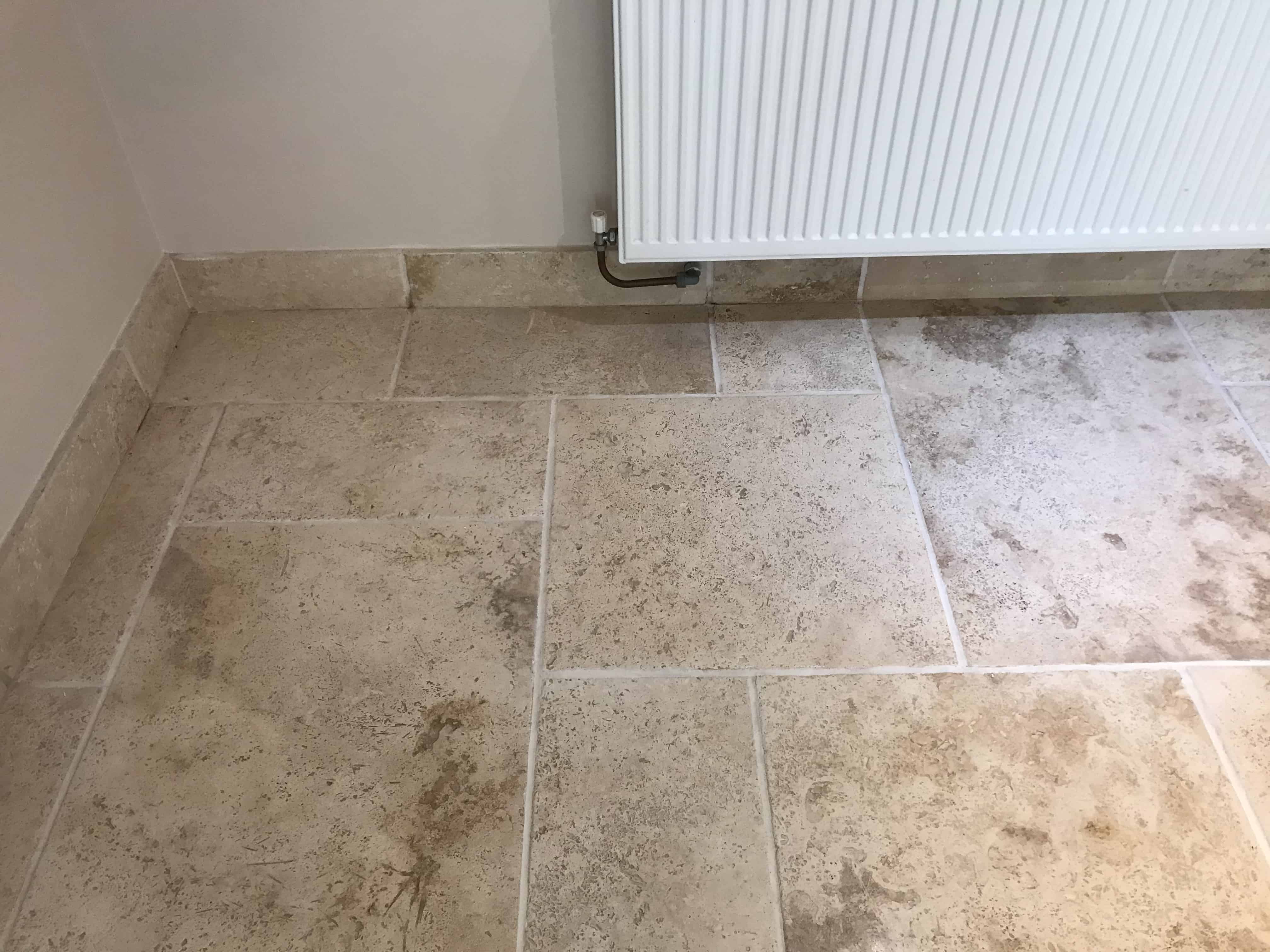Earlier this year I was contacted by a homeowner from the village of Swallowfield near Reading about the removal of Red Wine staining from their Travertine tiled floor. Normally these requests are related to a few slashes of wine following a party however in this case the problem was much bigger.

If you have a Travertine floor you will appreciate that its best to clean up a mess like immediately, leaving it any longer increases the chance the stain will breach the sealer and stain the stone and grout. In this case it had been left far too long and the red wine had penetrated the tile darkening its appearance, understandably my Customer was not happy.
 |
 |
One of the advantages of being part of a group like Tile Doctor is they have developed numerous products and techniques for dealing with all types of situations related to the cleaning of stone, tile, and grout. Whilst the most popular work we do relates to the cleaning and sealing of floors sometimes we get asked to resolve more unusual issues such as this. Long story short I was able to arrange a visit to the property where I completed a successful cleaning demonstration, happy with the result from the demo the work was booked in.
Removing Red Wine Staining from Travertine
The first task was to clean the tiles to remove any remaining residue wine, I did this using Tile Doctor Neutral Tile Cleaner rinsing with plenty of water and extracting the soil with a wet vacuum. Though this did improve the stain slightly it was obvious the wine had penetrated deep into the stone. At this time, the customer was quite concerned that it wasn’t going to budge however I reassured him this was only the first stage of the process and trick up my sleeve.
I mentioned earlier Tile Doctor have developed numerous products and techniques and this includes Tile Doctor Reduxa which is a specialised stain remover that’s sole purpose is to remove acidic stains from stone.
 |
 |
Working in small sections Reduxa is sprayed onto the stain tile, left to soak in and the dried out using a heat gun. Each time the treated area is dried in this manner the heat causes the product to evaporate taking the stain with it. It sounds simple but the process needed to be repeated six to eight times until the stain was invisible to the eye.
Following the removal of the stain I needed to restore the finish of the stone in the affected area by applying a series of Burnishing Pads from 400 to 3000 grit. These pads remove old sealers and then re-build the finish on the Travertine. It’s necessary to lubricate with water and then rinse the floor and extract afterwards as the coarser grit pads do generates some soil.
Sealing a Travertine Tiled Floor
I returned the next day to reseal the stone however the floor needs to be dry before applying the sealer, so I checked the moisture levels first with a damp meter. Happily, the floor was dry, so I was able to move straight on to sealing by applying two good coats of Tile Doctor Ultra-Seal.
 |
 |
Ultra-Seal is a no-sheen, natural-look penetrating sealer that provides maximum stain protection without darkening or changing the appearance of the stone. It’s also an excellent grout sealer.

Source: Grout Cleaning and Stain Removal Service in Berkshire